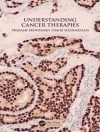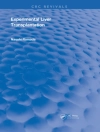Salivary glands are unique because of the manifold subtypes of benign and malignant diseases found there. Written by world-renowned experts, Salivary Gland Disorders and Diseases: Diagnosis and Management fills a major gap in the literature by presenting modern and up-to-date knowledge on all aspects of this important field.
From new findings at the molecular level, to diagnostic advances in cytopathology, histopathology, biochemistry, and imaging studies, to technical innovations and surgical and medical management, the book covers every diagnostic and therapeutic development and innovation. Its clear, concise, and heavily illustrated approach makes it ideal for use by both beginners and more experienced surgeons and physicians.
Features:
- Covers the full spectrum of infectious, inflammatory, acute, chronic, benign, and malignant disorders and diseases of the salivary glands
- Offers a wealth of expert tips, tricks, pitfalls, and recommendations for effective diagnostic, surgical, and medical management
- Highlights all topics with hundreds of full-color images, diagrams, and superbly detailed surgical illustrations
As the comprehensive reference in the field, this book is essential for head and neck surgeons, otorhinolaryngologists, maxillofacial surgeons, dentists, oral pathologists, plastic surgeons, and any other clinicians involved in daily clinical management of patients with salivary gland disorders and diseases.
Table des matières
I Salivary Glands—Anatomy and Evaluation
1 Embryology and Clinical Anatomy
2 Regulatory Mechanisms and Salivary Gland Functions
3 Evaluation of Saliva—Normal and in Disease
4 Contemporary Salivary Clinical Pathology—Facts and Dilemmas
5 Methods of Investigation
6 Patient History and Clinical Examination
7 Evaluation of Salivary Glands—Imaging
8 Fine-Needle Aspiration Cytology and Frozen Sections in Salivary Gland Diseases
9 Diagnostic Sialendoscopy
II Pediatric Disorders
10 Congenital and Developmental Abnormalities
11 Salivary Gland Neoplasms
12 Drooling
13 Inflammatory and Infectious Diseases of Salivary Glands
III Physiological Disorders
14 Dry Mouth and Dry Eyes
15 Sialadenitis and Sialadenosis—Interventional Sialendoscopy
16 Autoimmune Disorders, Lymphoproliferation and Granulomatous Inflammation
17 Cystic Salivary Gland Tumors Including Cystic Neoplasms
IV Benign Salivary Gland Neoplasms
18 Epidemiology of Benign Salivary Gland Neoplasms
19 Etiology
20 Classification of Benign Salivary Neoplasms
21 Investigation
22 Surgical Management
23 Radiotherapy
24 Recurrent Benign Salivary Tumors
V Malignant Salivary Gland Neoplasms
25 Epidemiology of Malignant Salivary Gland Neoplasms
26 Etiology
27 Malignant Salivary Gland Neoplasms—Classification
28 Imaging Examinations
29 Surgical Management
30 Radiotherapy
31 Chemotherapy and Novel Therapeutics
32 Neck Metastasis
33 Locoregional Recurrence and Its Management
34 Distant Metastases and Management
35 Prognostic Index for Overall Disease Control in Patients with Parotid Carcinoma
VI Other Topics
36 Malignant Head and Neck Tumors and Skin Cancer Infiltrating the Parotid Glands
37 Metastases to the Major Salivary Glands from Non–Head and Neck Primary Malignancies
38 Principles of Facial Reanimation Surgery
39 Morbidity of Treatments
40 Trauma-Induced Problems in the Salivary Glands
41 Quality of Life in Salivary Gland Diseases
42 Influence of (Chemo-) Radiotherapy on Salivary Gland Function and Its Impact on Quality of Life
43 Salivary Gland Transplantation
44 Salivary Gland Regeneration and Tissue Engineering
45 Medicolegal Issues
46 New Developments in Molecular Biology












